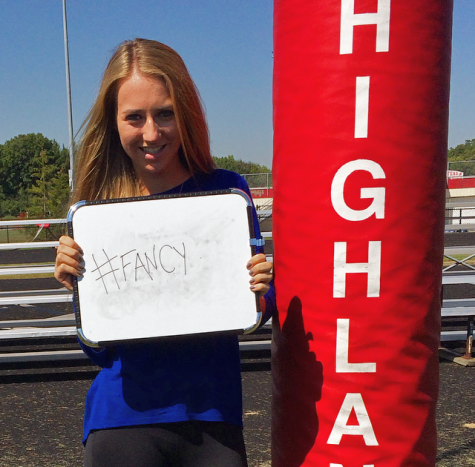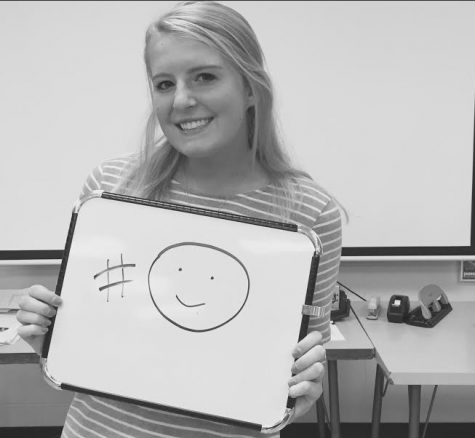College athletes: To pay or not to pay
Recognition for college athletes is needed
By Katya Mikhailenko
Billions of dollars funnel into college sports, and athletes are beginning to want their share. It has come into question whether collegiate athletic scholarship recipients should receive a salary for playing their sport.
Current rules state that athletes who get full scholarships receive room, board, books, tuition and fees. That’s it. The athletic scholarship doesn’t cover extras.
A school can can give money to regular students, buy them meals, purchase plane tickets for them, or give them cars. But for athletes to receive the same treatment is a slam-dunk NCAA violation. They call it special benefits and it is a big no-no.
Being an athlete in college is a huge sacrifice. Non-athletes are able to get a job, but athletes are only allowed to work on long school vacations and during the summer. However, a basketball player who spends his entire summer working and not practicing will most likely not be shooting hoops for his college in the winter.
It does not dawn on most people that there are athletes attending division one colleges who are not receiving full scholarships.
Dylan Moser, sophomore, strongly supports athletes receiving a salary. Moser believes that being a college athlete is in fact a job and compensation should be given.
“Certain universities have these stadiums that are larger than life, along with unbelievably nice facilities, most paid for by the profit earned by the athletes,” Moser said.
Mardee Merar, Class of ’14 and tennis player at the University of Milwaukee, was offered a full ride scholarship to play tennis.
Merar understands what it is like to be a college athlete and believes that “college athletes should be paid with regulations. College athletics is a huge commitment, and it would make sense for athletes to be given a certain amount of money for the revenue that they bring in,” Merar said.
However, Merar limits the salary to athletes only in sports bringing in revenue. “Tennis, as a sport, does not bring in much revenue. I already have all my school paid for plus extras; for me that’s all I need,” Merar added.
Mr. Ryan Mangan, athletic director, believes that being a scholarship athlete is equivalent to a full-time job. “The time and effort they put in is worth more than the scholarship [athletes] receive,” Mangan said.
Mr. Mangan is well aware of “universities, coaches and many others making millions of dollars off the efforts of ‘amateur’ athletes.” He believes that these athletes deserve a cut of the profits.
“Student athletes are completely committed to their athletic program 24/7, it seems appropriate that they should receive a stipend of some sort,” Mr. Dave Keel, head football coach, agreed.
Having a clear perspective on how hard athletes are forced to work to be good at their sport, Keel suggests giving athletes some compensation. Athletes should receive part of the money earned by “the images of the athletes which are sold by the university, along with the money earned by selling jerseys,” Coach Keel added.
Slowly, yet surely, athletes are beginning to gain some recognition. Select universities are allowing athletes to earn an additional $2,000 to $5,000, along with a scholarship.
Fortunately, athletes are heading down a road leading them to receiving what they truly deserve.
Recognition for college athletes is not necessary
By Maggie Hadcock
According to ESPN Outside the Lines, the University of Wisconsin – Madison athletic programs generate about $149 million in revenue; however, the total expense reaches $147 million. This is one reason collegiate athletes should not be paid for competing.
To begin, these are not only athletes but students. They are going to college for the purpose of receiving a higher education. In continuation, athletes on scholarship receive tremendous benefits in regards to financial and educational help, according to Richard Burton, professor of sport management at Syracuse. “NCAA Division I athletes still receive expert coaching, on-campus housing, frequent meals, non-uniform clothing, free medical consultation, free access to state-of-the-art training facilities and free professional development (media/public relations, life skills, networking, etc.),” Burton explained.
Many of the student-athletes are gaining a superior education for little to no price via the financial aid provided by athletic scholarships. NCAA research shows nearly 20 percent of student-athletes across the association are first-generation college students. Mrs. Susan Godfrey, physical education teacher, agrees, “I think it is a fine line between earning scholarships and receiving pay. Athletes should not receive a scholarship and be paid.”
Collegiate athletes gain access to advanced technology and helpful tutoring specially provided for student-athletes. Other benefits of being a student-athlete exist in state-of-the-art training facilities, fantastic medical care and healthy living situations.
Furthermore, paying college athletes brings up the issue of equality. If football makes more than tennis then how do one equally distribute pay? If men’s volleyball makes more than women’s then how do you pay each team equally?
Mr. Ryan Mangan, athletic director, believes “colleges must keep some equality to the value of the scholarship.” According to businessofcollegesports.com, the University of Wisconsin-Madison’s football team made 100 times more money than the highest grossing women’s sports team. It is extremely hard to provide equal pay for all sports and within the genders.
“It is hard because do college swimmers get paid less than football players?” Mrs. Godfrey said.
Finally, the vast majority of schools lose money from athletics. As a result, most universities and colleges rely on support from general funds, donations, student fees and government money. When college athletics are making little to no profit, how do they expect to pay the athletes?
Dan Fulks, professor at Transylvania University, did a report for the NCAA, and found only 14 of the 120 teams in the Football Bowl Subdivision made a profit in the 2009 school year. As an illustration, 97 non-football teams lost an average of three million dollars. The amount of money generated by college athletics is not nearly enough to pay college athletes. Collegiate student-athletes should not be paid anything in addition to the enormous benefits they already reap.

You can usually find Carly being sassy wherever she goes. Whether watching "Criminal Minds," hanging out with her friends, or feeding her shopping...

Who that, who that, K-E-L-L-Y Allen, and she’s so fancy (you already know). When Allen isn’t busy completing mountains of homework, it’s...

Sydney Crivello can basically be described by "average teenage girl" (minus owning a pair of cliché white Converse and having a Starbucks gold membership...

